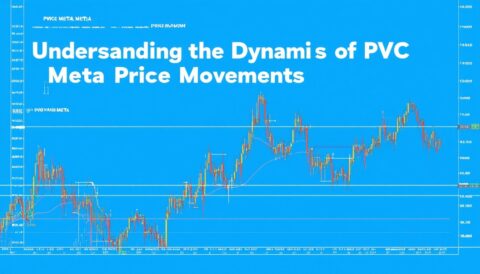Cryptocurrencies have matured from niche digital assets to globally traded financial instruments, and Ozone Coin has emerged as one of the newer projects vying for a seat at the table. The price of Ozone Coin, like many altcoins, captures the intrigue of speculators and investors alike due to its volatility, ecosystem potential, and the broader trends in the crypto market. By exploring the live value, market capitalization, historical performance, and technical as well as fundamental factors, stakeholders can make more informed decisions about Ozone Coin’s evolving role in the digital asset space.
Live Ozone Coin Price and Real-Time Market Cap
Ozone Coin’s price is dynamic, reflecting real-time sentiment and activity in cryptocurrency exchanges. Live pricing data responds instantly to buy and sell pressure, trading volumes, and shifts in broader crypto sentiment. Ozone Coin’s market cap, meanwhile, is calculated by multiplying its circulating supply by the current price, offering a snapshot of its comparative size within the sector.
At any given moment, price trackers and exchanges such as CoinMarketCap, CoinGecko, or Binance provide updated Ozone Coin statistics. The integration of API-driven feeds ensures up-to-the-moment accuracy, enabling traders to respond swiftly to shifting conditions.
For example, when a new market listing or partnership is announced, liquidity and price tend to spike, similar to patterns observed with other altcoins in their early growth phases. These surges are usually accompanied by notable increases in trading volume, emphasizing the importance of real-time data for speculative and technical traders.
Chart Analysis: Trends in Ozone Coin Price Movements
Examining Ozone Coin’s historical price charts uncovers both short-term volatility and longer-term trends. Certain technical indicators—moving averages, Relative Strength Index (RSI), Bollinger Bands—are frequently used to detect trends, potential reversals, or overbought/oversold conditions.
Key Price Patterns and What They Suggest
- Bullish trends: Consistent higher highs and higher lows, often driven by ecosystem news, exchange listings, or broader market rallies.
- Bearish phases: Marked by lower highs and breakdowns below key support levels—sometimes triggered by regulatory shifts or negative sentiment.
- Consolidation zones: Sideways price action can signal accumulation or uncertainty before a larger move.
Seasoned chart analysts often combine these visuals with order book data to gauge support and resistance. During 2021’s rapid bull cycle, for instance, several altcoins experienced parabolic growth followed by sharp corrections—reminding investors of the importance of risk controls.
“Technical analysis remains essential—identifying patterns and volume shifts helps traders anticipate momentum, but context is everything,” notes a digital asset market strategist.
Comparing Ozone Coin to Peer Tokens
Ozone Coin’s behavior often mirrors that of comparable sector tokens. When Bitcoin or Ethereum rallies, many microcap tokens, including Ozone, may see inflows as traders pursue higher potential returns. Conversely, risk aversion periods tend to see sharp outflows from less established coins.
Fundamental Drivers Behind Ozone Coin Valuation
While technical analysis can pinpoint entry and exit points, the fundamental value proposition of Ozone Coin ultimately shapes its long-term trajectory. Several core factors drive its price:
1. Project Utility and Adoption
Ozone Coin’s utility—whether as a platform token, governance asset, or specialized payment mechanism—affects demand. Clear utility and expanding real-world use cases typically encourage long-term holding and incremental value growth.
2. Development Activity and Roadmap Execution
A robust developer community and consistent roadmap progress build confidence. New partnerships, decentralized application (dApp) rollouts, or integrations with larger protocols can dramatically shift perceived value.
3. Tokenomics and Circulating Supply
Supply economics play a crucial role. A fixed, deflationary supply tends to be seen as inflation-proof, while higher emissions can dilute value over time. Transparent token allocation also reassures investors and reduces concerns about insider sell-offs or sudden supply shocks.
External Factors: Macro Trends & Regulatory Landscape
No cryptocurrency operates in a vacuum. Ozone Coin’s price often responds to factors outside its immediate ecosystem:
- Market sentiment: Bitcoin’s price action, investor risk appetite, and macroeconomic instability or growth.
- Legislative changes: Regulatory news—particularly in major markets—can boost or restrict accessibility, directly impacting price.
- Exchange listings: Addition to popular exchanges frequently triggers price spikes, as accessibility and credibility grow.
In practice, these influences can override fundamental strength, especially during periods of extreme market optimism or fear, making constant monitoring critical for active participants.
Real-World Example: The Impact of Major Announcements
Consider the example of several DeFi project tokens that surged in value after announcing new staking rewards or launching NFT marketplaces. Ozone Coin exhibits similar tendencies—key partnership news or network upgrades regularly prompt sudden rallies.
In 2023, many coins experienced double-digit increases in market cap within hours of exchange listings or protocol feature releases, underlining the market’s sensitivity to innovation and growth signals.
Risk Management and Volatility in the Ozone Coin Market
Ozone Coin, being a comparatively young and thinly traded asset, is prone to amplified volatility. Sudden price “pumps and dumps” are not uncommon among emerging altcoins. Investors should deploy disciplined risk management strategies such as:
- Setting clear stop-loss levels on each trade.
- Diversifying across more liquid, larger coins to shield against idiosyncratic shocks.
- Following credible sources for project developments rather than hype-fueled speculation.
Long-term holders often employ dollar cost averaging (DCA) to smooth out volatility, a strategy widely regarded as prudent in turbulent markets.
Key Takeaways and Strategic Outlook
The pricing and valuation of Ozone Coin are shaped by a nuanced combination of live market data, technical charting, fundamental ecosystem growth, and macroeconomic as well as regulatory forces. Both traders and long-term investors benefit from integrating these diverse analytical layers to respond with agility and confidence.
When approaching Ozone Coin, it’s vital to balance excitement about technology and partnerships with sober risk management, particularly in such a dynamic and unpredictable sector. As with all cryptocurrencies, continuous learning and vigilant monitoring of both market and project developments will remain critical for anyone seeking to capitalize on Ozone Coin’s potential.
FAQs
How is the current Ozone Coin price determined?
Ozone Coin’s price is set by the latest trades on crypto exchanges, fluctuating rapidly based on supply, demand, and trading volume.
What factors influence the market cap of Ozone Coin?
Market capitalizations reflect Ozone Coin’s price multiplied by the circulating supply, making it sensitive to both price changes and adjustments in available tokens.
Where can Ozone Coin be tracked in real-time?
Major platforms like CoinMarketCap, CoinGecko, or direct crypto exchange dashboards provide up-to-date live price and volume data for Ozone Coin around the clock.
How does news affect Ozone Coin price movements?
Announcements about partnerships, exchange listings, or technology upgrades often trigger swift price surges or corrections, highlighting the impact of sentiment and newsflow.
Is Ozone Coin more volatile than major cryptocurrencies?
Yes, as a smaller cap coin, Ozone typically experiences larger swings compared to established assets such as Bitcoin or Ethereum, making risk management essential.

What investment strategies are common for volatile altcoins like Ozone?
Many investors use dollar-cost averaging or set strict stop losses to manage volatility when trading or holding emerging coins such as Ozone.





